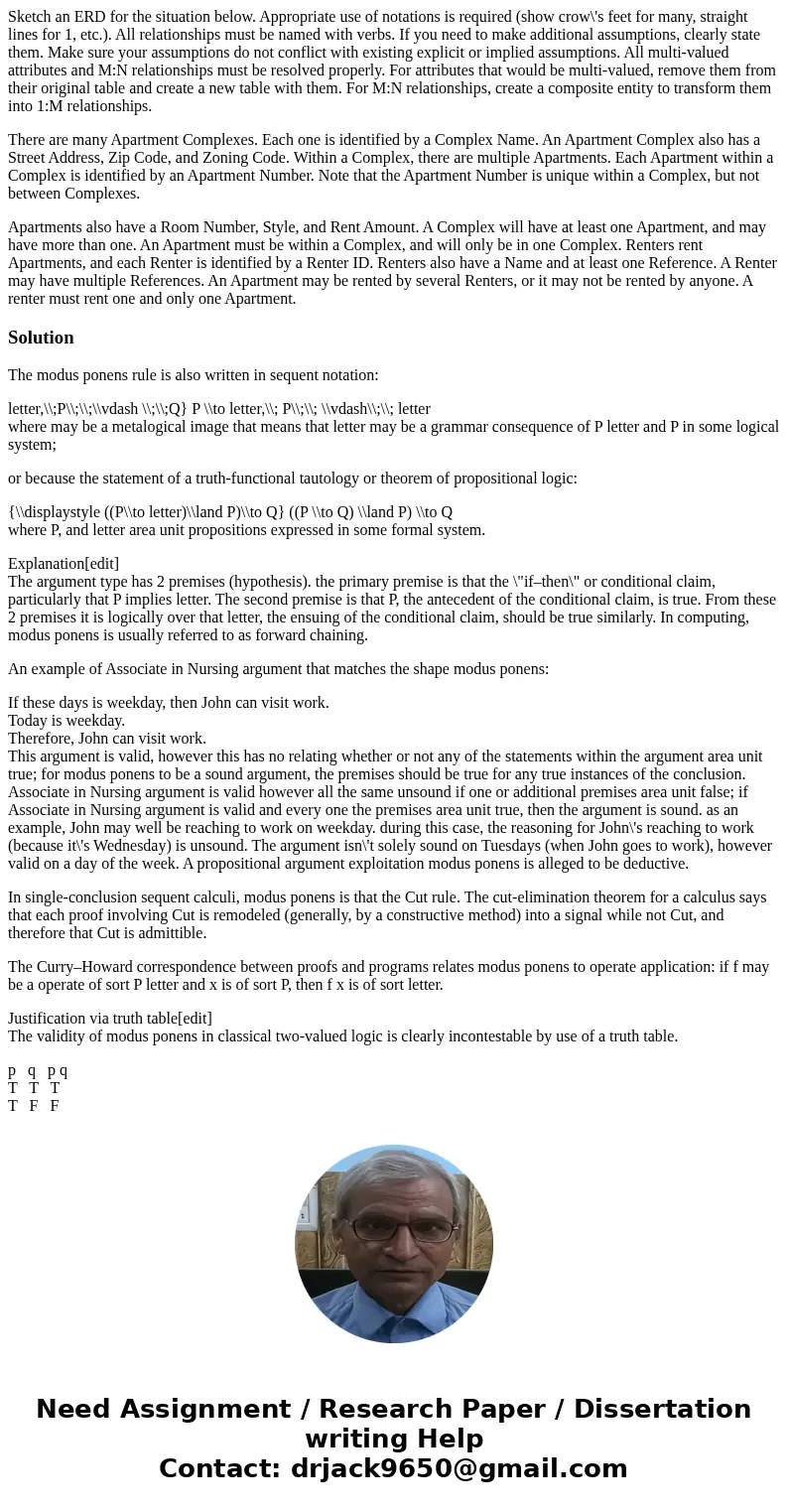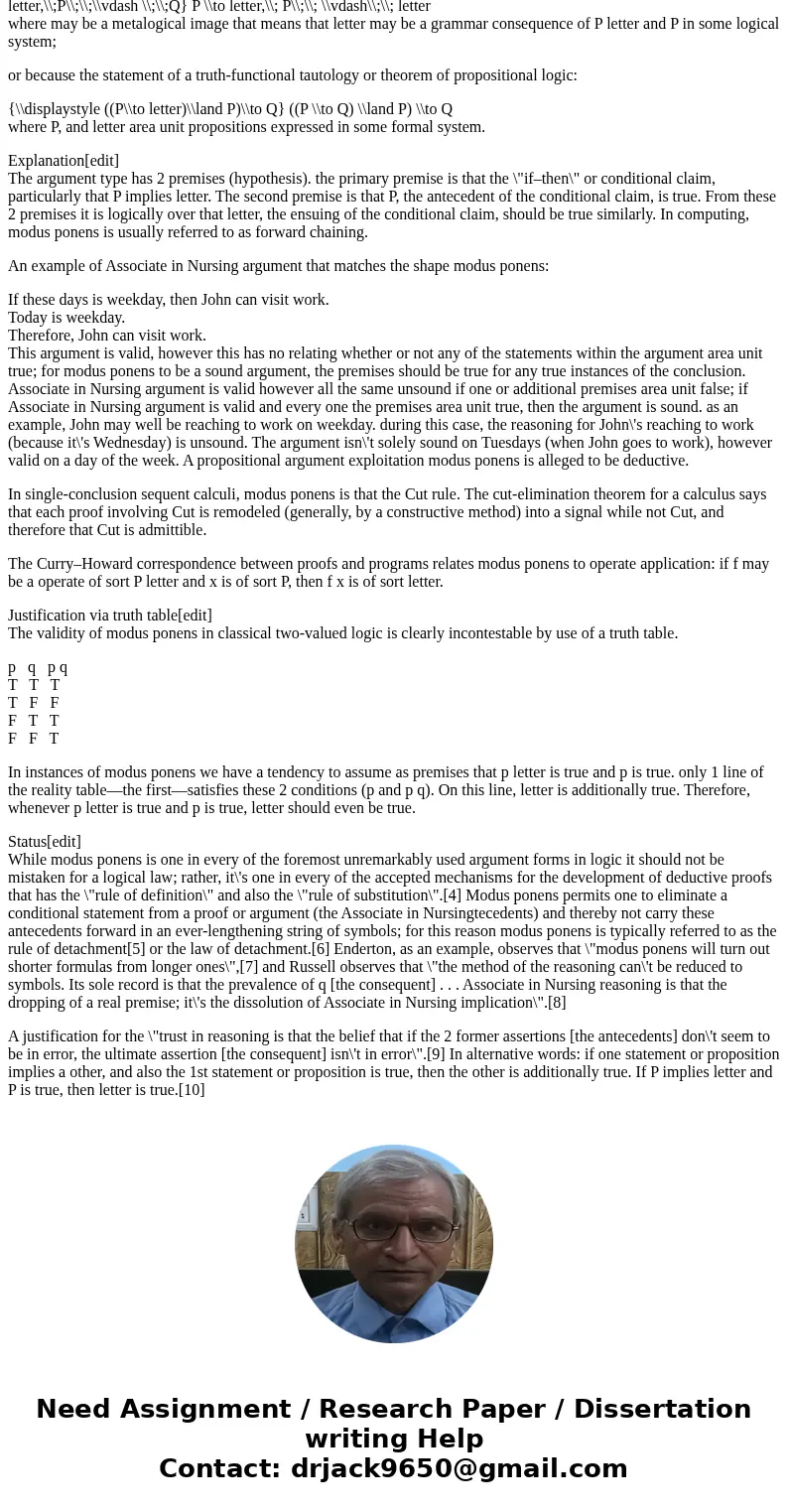Sketch an ERD for the situation below Appropriate use of not
Sketch an ERD for the situation below. Appropriate use of notations is required (show crow\'s feet for many, straight lines for 1, etc.). All relationships must be named with verbs. If you need to make additional assumptions, clearly state them. Make sure your assumptions do not conflict with existing explicit or implied assumptions. All multi-valued attributes and M:N relationships must be resolved properly. For attributes that would be multi-valued, remove them from their original table and create a new table with them. For M:N relationships, create a composite entity to transform them into 1:M relationships.
There are many Apartment Complexes. Each one is identified by a Complex Name. An Apartment Complex also has a Street Address, Zip Code, and Zoning Code. Within a Complex, there are multiple Apartments. Each Apartment within a Complex is identified by an Apartment Number. Note that the Apartment Number is unique within a Complex, but not between Complexes.
Apartments also have a Room Number, Style, and Rent Amount. A Complex will have at least one Apartment, and may have more than one. An Apartment must be within a Complex, and will only be in one Complex. Renters rent Apartments, and each Renter is identified by a Renter ID. Renters also have a Name and at least one Reference. A Renter may have multiple References. An Apartment may be rented by several Renters, or it may not be rented by anyone. A renter must rent one and only one Apartment.
Solution
The modus ponens rule is also written in sequent notation:
letter,\\;P\\;\\;\\vdash \\;\\;Q} P \\to letter,\\; P\\;\\; \\vdash\\;\\; letter
where may be a metalogical image that means that letter may be a grammar consequence of P letter and P in some logical system;
or because the statement of a truth-functional tautology or theorem of propositional logic:
{\\displaystyle ((P\\to letter)\\land P)\\to Q} ((P \\to Q) \\land P) \\to Q
where P, and letter area unit propositions expressed in some formal system.
Explanation[edit]
The argument type has 2 premises (hypothesis). the primary premise is that the \"if–then\" or conditional claim, particularly that P implies letter. The second premise is that P, the antecedent of the conditional claim, is true. From these 2 premises it is logically over that letter, the ensuing of the conditional claim, should be true similarly. In computing, modus ponens is usually referred to as forward chaining.
An example of Associate in Nursing argument that matches the shape modus ponens:
If these days is weekday, then John can visit work.
Today is weekday.
Therefore, John can visit work.
This argument is valid, however this has no relating whether or not any of the statements within the argument area unit true; for modus ponens to be a sound argument, the premises should be true for any true instances of the conclusion. Associate in Nursing argument is valid however all the same unsound if one or additional premises area unit false; if Associate in Nursing argument is valid and every one the premises area unit true, then the argument is sound. as an example, John may well be reaching to work on weekday. during this case, the reasoning for John\'s reaching to work (because it\'s Wednesday) is unsound. The argument isn\'t solely sound on Tuesdays (when John goes to work), however valid on a day of the week. A propositional argument exploitation modus ponens is alleged to be deductive.
In single-conclusion sequent calculi, modus ponens is that the Cut rule. The cut-elimination theorem for a calculus says that each proof involving Cut is remodeled (generally, by a constructive method) into a signal while not Cut, and therefore that Cut is admittible.
The Curry–Howard correspondence between proofs and programs relates modus ponens to operate application: if f may be a operate of sort P letter and x is of sort P, then f x is of sort letter.
Justification via truth table[edit]
The validity of modus ponens in classical two-valued logic is clearly incontestable by use of a truth table.
p q p q
T T T
T F F
F T T
F F T
In instances of modus ponens we have a tendency to assume as premises that p letter is true and p is true. only 1 line of the reality table—the first—satisfies these 2 conditions (p and p q). On this line, letter is additionally true. Therefore, whenever p letter is true and p is true, letter should even be true.
Status[edit]
While modus ponens is one in every of the foremost unremarkably used argument forms in logic it should not be mistaken for a logical law; rather, it\'s one in every of the accepted mechanisms for the development of deductive proofs that has the \"rule of definition\" and also the \"rule of substitution\".[4] Modus ponens permits one to eliminate a conditional statement from a proof or argument (the Associate in Nursingtecedents) and thereby not carry these antecedents forward in an ever-lengthening string of symbols; for this reason modus ponens is typically referred to as the rule of detachment[5] or the law of detachment.[6] Enderton, as an example, observes that \"modus ponens will turn out shorter formulas from longer ones\",[7] and Russell observes that \"the method of the reasoning can\'t be reduced to symbols. Its sole record is that the prevalence of q [the consequent] . . . Associate in Nursing reasoning is that the dropping of a real premise; it\'s the dissolution of Associate in Nursing implication\".[8]
A justification for the \"trust in reasoning is that the belief that if the 2 former assertions [the antecedents] don\'t seem to be in error, the ultimate assertion [the consequent] isn\'t in error\".[9] In alternative words: if one statement or proposition implies a other, and also the 1st statement or proposition is true, then the other is additionally true. If P implies letter and P is true, then letter is true.[10]


 Homework Sourse
Homework Sourse